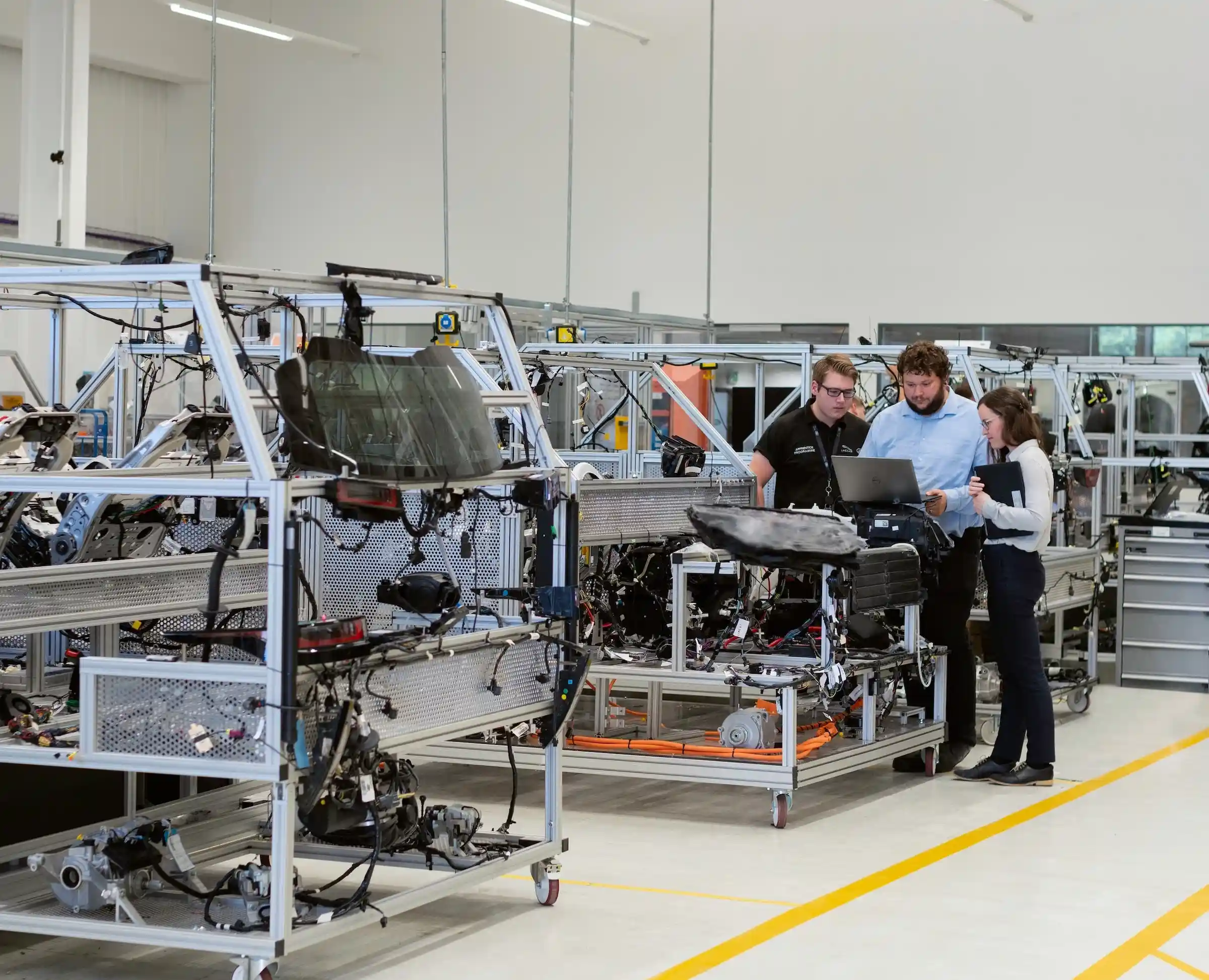What is Tribal Knowledge, and How Do You Capture It?
There is a paradigm shift in manufacturing companies: the baby boomer generation that made up most of the workforce is retiring. And when they retire, critical information, often referred to as “Tribal Knowledge,” goes with them, resulting in information gaps at the companies they leave behind.
In the USA alone, there are an estimated 12 million manufacturing employees over 55. The National Association of Manufacturers says in the next decade, companies will need to replace over 3 million jobs due to the retirement of manufacturing employees. And it’s keeping executives up at night.
To address this brain drain, companies need to take action now in order to maintain institutional knowledge and position themselves for success. This means equipping the next generation of workers with the right tools to succeed.
What is Tribal Knowledge?
According to Lucidchart, tribal knowledge is defined as: “Any unwritten knowledge within a company that is not widely known. This could be actual data, such as passwords, or more abstract knowledge, such as best practices and processes. Because it is unwritten, tribal knowledge is typically shared by word-of-mouth (if at all).”
When it comes to manufacturing and supply chain, examples of tribal knowledge abound, especially in the USA, examples of tribal knowledge abound. I vividly recall a plant I used to frequent in the heart of Michigan that had a finicky line. There was one person who could make the line run efficiently, and he was relied on heavily. He got sick and was out for weeks. The company ultimately had to fly in the OEM from Europe to help run the line.
This was a six-figure bill for them to pay. Situations like this are avoidable and can be remedied with minimal investment in the right tools. At Specright, the customers we work with are identifying specification management as an answer to this problem.
How is Tribal Knowledge Created in the Workplace
The collective understanding, experience, and know-how acquired and shared among individuals within an organization create tribal knowledge. This type of knowledge is usually undocumented, can only be passed down through generations or teams, and is crucial for the optimal functioning of the workplace. There are several ways in which this knowledge is created in the workplace.
First, this type of knowledge is developed through daily interactions and collaborations among employees. As employees work together, they exchange information, share best practices, correct machining techniques (for tribal manufacturing businesses), and learn from one another.
Second, tribal or institutional knowledge is created through learning from experience. Employees gain insights and expertise from hands-on experiences, problem-solving, and overcoming obstacles in their respective roles.
Furthermore, it can be created and passed through mentorship, apprenticeship programs, and even during onboarding. Highly-experienced and knowledgeable employees with decades of experience transfer their knowledge to new hires or less-experienced colleagues, ensuring the preservation and transfer of valuable workplace knowledge (like critical HVAC maintenance tips for a facility maintenance firm).
Another significant contributor to tribal knowledge is the documentation and sharing of lessons learned. This can be achieved using formal and informal channels like wikis, knowledge bases, intranets, or casual conversations. For example, documenting a highly-regarded former shop supervisor’s critical knowledge of the correct propane usage can help the next set of engineers.
Preserving this knowledge helps prevent the entire process of reinventing the wheel and allows for continuous improvement. Understanding the value of this common knowledge fosters a culture of knowledge sharing that can enhance the effectiveness of workflows, promote innovation, and facilitate the growth and development of employees.
How to Capture Tribal Knowledge
1. By Identifying Goals and Knowledge to Be Captured
Organizations can start by assessing their strategic objectives and areas of expertise to identify goals and knowledge to be captured. Decision-makers can also consider conducting interviews, surveys, and feedback sessions with employees to identify critical knowledge gaps and areas of focus for capturing tribal knowledge. Collaborating with subject matter experts and analyzing existing documentation can also provide insights into the tribal manufacturing or operations knowledge of a quality manufacturer or any other type of business requiring capturing.
2. By Identifying Key Employees with Tribal Knowledge
Organizations can start by recognizing individuals who possess extensive experience, expertise, and insights within their respective roles. For instance, determining which senior design engineer at a designing firm for water heaters has the most extensive knowledge of brass fittings. Conducting thorough audits and knowledge assessments can help identify employees who consistently demonstrate exceptional performance, have necessary certifications, and have deep institutional knowledge. Additionally, considering employee feedback, referrals from colleagues, and conducting knowledge transfer sessions can assist in identifying the key employees who hold valuable tacit knowledge.
3. By Developing a Knowledge Management Strategy
Determine what you aim to achieve by capturing and leveraging tribal knowledge, such as improving operational efficiency, enhancing innovation, or facilitating knowledge transfer. The senior management should then evaluate the organization’s current knowledge management practices and identify gaps. The next step is creating a knowledge repository, implementing knowledge-sharing platforms, or organizing regular knowledge-sharing sessions. The game plan should be appropriately aligned with the goals and responsibilities of the organization from the top right down to the bottom of the hierarchy. The allocation of resources must be streamlined and cater to every department’s needs. For example, a company manufacturing HVAC and refrigeration equipment in South Carolina must ensure that resources are allocated adequately and efficiently to meet every deadline and shipment order. Finally, the organization’s communication patterns must also be factored in.
4. By Selecting the Right Knowledge Management Technology
Look for a technology platform that offers specific features for capturing and documenting tribal knowledge, such as customizable forms, templates, and multimedia capabilities (e.g., video or audio recording). Ensure the technology provides robust content organization and search functionalities. It should allow tagging, categorization, and metadata management to easily retrieve relevant tribal knowledge. Choose a platform that facilitates collaboration and encourages sharing of knowledge among employees. Features like discussion boards, commenting, FAQ sections, and user-generated content can enhance the sharing of tribal knowledge.
5. By Establishing a Culture of Organizational Learning
Fostering an environment that values and supports continuous learning and development motivates employees to enhance their skills and knowledge actively. This naturally leads to sharing expertise and knowledge among team members, enabling the capture of tribal knowledge. To cultivate a knowledge-seeking culture, organizations can facilitate various initiatives such as hosting communities of practice, organizing sessions to share knowledge, implementing mentorship programs, and encouraging peer-to-peer groups for learning. Conducting workshops can further encourage employees to seek out knowledge actively. You must encourage and mentor employees to contribute by writing company blog posts, internal newsletters, or creating videos that share their experiences and insights, show more desire to learn, and help capture institutional knowledge.
Specification Management Software: A Single Source of Truth for How Things are Made
We’ve established that retirees take knowledge and expertise that have been developed over multiple decades with them.
Unfortunately, most companies don’t have plans and/or the tools in place to transfer tribal knowledge from person to the company. I’ve seen companies try to address this in many ways over the years: paper notebooks on a manufacturing floor that get spilled on, chalkboards in humid plants where the chalk runs because of the humidity, even people telling me they don’t want to share information because if they share their knowledge of a certain widget, they lose job security. The list goes on.
When you peel back the onion of this problem, you realize that the information typically most at risk when it comes to tribal knowledge is related to specifications, the DNA-level data needed to make, buy or sell a product.

For example, the engineer who knows a machine runs a certain way in the summer but not in the winter or the packaging professional who knows that a certain rigid plastic container design won’t work in the Rockies because of altitude and pressure in the environment.
Executives and operators dealing with tribal knowledge or brain drain challenges like this should turn their attention to specifications. In both of these examples, this additional detail can be stored and associated to the right specification for visibility and traceability.
Specright is the first purpose-built platform for Specification Data Management™ and a fundamentally different approach to bringing products to market by starting with DNA-level specification data. Whether it’s packaging, raw materials, formulas, products, or machinery specifications, there are thousands of data points and processes at companies today that are held as tribal knowledge.
With Specright, companies can centrally document, map and manage their information, transitioning it from spreadsheets and lessons learned on the job to a secure online platform that can be used by the next generation of professionals entering the workforce.
And the brain drain isn’t limited to retirees: with Millennials are the most likely generation to switch jobs and do so more frequently than their predecessors, so it’s more important than ever to digitize critical data and processes in a single source of truth.
Spending extra time now will save you time, energy and financial resources both in the short and long term. After all, the status quo of not digitizing tribal knowledge is killing the bottom line of companies now and it will only get worse over the next decade unless action is taken.
Explore More Blogs
Get Started
With Specright’s Solution Suite, you can digitize, centralize, and link your specification data to drive efficiencies, intelligence, traceability, and collaboration within your organization and across your supply chain network.




